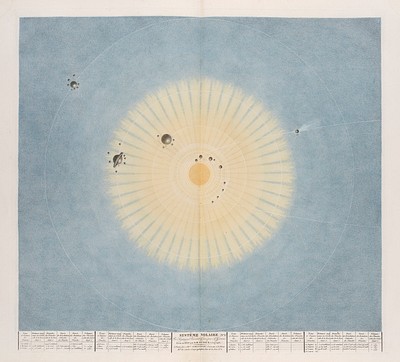Beisai, 100 Dolls, 1915
Lot 144
Absentee vs Live bid
Two ways to bid:
- Leave a max absentee bid and the platform will bid on your behalf up to your maximum bid during the live auction.
- Bid live during the auction and your bids will be submitted real-time to the auctioneer.
Bid Increments
| Price | Bid Increment |
|---|---|
| EUR€0 | EUR€10 |
| EUR€100 | EUR€10 |
| EUR€200 | EUR€20 |
| EUR€300 | EUR€30 |
| EUR€420 | EUR€30 |
| EUR€480 | EUR€20 |
| EUR€500 | EUR€50 |
| EUR€2,000 | EUR€200 |
| EUR€3,200 | EUR€300 |
About Auction
By Jeschke Jádi Auctions Berlin GmbH
Dec 15, 2022
Set Reminder
2022-12-15 09:00:00
2022-12-15 09:00:00
America/New_York
Bidsquare
Bidsquare : Auction 145 – Rare Books, Decorative Prints, Historical Photography
https://www.bidsquare.com/auctions/jeschke-van-vliet/auction-145-rare-books-decorative-prints-historical-photography-11466
Jeschke Jádi Auctions Berlin GmbH info@jvv-berlin.de
Jeschke Jádi Auctions Berlin GmbH info@jvv-berlin.de
- Lot Description
Japan Nishizawa Tekiho, Kubota Beisai & Hina Hyakushu (= 100 Entwürfe Japanischer Puppen). Mit zahlreichen ganzseitigen Farbholzschnitt-Illustrationen u. einem gefalt. Farbholzschnitt. 3 Bde. (ohne Kommentarband). Kyoto, Unsodo, 1915 (10. Dezember im 4. Jahr von Taisho). (I) 44 nn. Bll. (II) 32 nn. Bll. (III) 44 nn. Bll. Quer 8°. Je illustr. original jap. Blockbuchbindung mit DTitel, original Kt.-Mappe mit Schließbändern beiliegend (diese stark beschädigt, insgesamt etw. fleckig u. berieben). (= 100 Designs of Japanese Dolls). With numerous full-page colour woodcut illustrations and one folded colour woodcut. 3 vols. (without commentary volume). 1915 (December 10 in the 4th year of Taisho). Each illustrated original Jap. block binding with cover title, original cardboard case with closing bands (case rather strong damaged, the bindings overall slightly stained and rubbed). Beisai, the son of the famous Japanese painter of the Meiji period Kubota Beisen. Nishizawa Tekiho, a Japanese painter of the Nihonga direction. - Shown are 100 designs for hina dolls (hina ningyo). Hina dolls are traditionally displayed at Hina Matsuri, the "doll" or "girl" festival, which is celebrated in Japan every year in early March. They have their origins in the Edo period, when they were considered lucky charms because they were believed to trap evil spirits inside. The mostly very colorful dolls are dressed in the style of the Heian period and represent the emperor, the empress and their court. - A few pages a bit light-margined and with slight colour abrasion, due to the gluing of the leaves in the outer margin verso a bit glue-shaded and lightly foxed, overall in good condition, the woodcuts in strong colour, sometimes finely printing the wood grain. Beisai, der Sohn des bekannten japanischen Maler der Meiji Periode Kubota Beisen. Nishizawa Tekiho, ein japanischer Maler der Nihonga-Richtung. - Gezeigt werden 100 Entwürfe für Hina-Puppen (hina ningyo). Die Hina-Puppen werden traditionell am Hina Matsuri, dem "Puppen-" oder "Mädchenfest" aufgestellt, welches in Japan jedes Jahr Anfang März gefeiert wird. Ihren Ursprung haben sie in der Edo-Zeit, in der sie als Glücksbringer galten, da man glaubte, dass sie böse Geister in ihrem Inneren einschließen konnten. Die meist sehr farbenfrohen Puppen sind im Stil der Heian-Zeit gekleidet und stellen den Kaiser, die Kaiserin und deren Hofstaat dar. - Wenige Bll. etw. lichtrandig u. mit leichtem Farbabrieb, aufgrund der Blattverklebung im Außenrand verso je etw. leimschattig u. leicht stockfleckig, insgesamt wohlerhalten, die Holzschnitte in kräftigem Kolorit, tls. die Holzmaserung fein mitdruckend. * Dieses Werk ist regelbesteuert. Auf den Zuschlagspreis fallen 23,95% Aufgeld sowie auf den Rechnungsendbetrag 7% bzw. 19% Mehrwertsteuer in der Europäischen Union an. This work is subject to the regular margin scheme. There is a 23.95% buyer's premium on the hammer price and 7% or 19% VAT on the final invoice amount in the European Union.Nishizawa Tekiho, Kubota Beisai & Hina Hyakushu (= 100 Entwürfe Japanischer Puppen). Mit zahlreichen ganzseitigen Farbholzschnitt-Illustrationen u. einem gefalt. Farbholzschnitt. 3 Bde. (ohne Kommentarband). Kyoto, Unsodo, 1915 (10. Dezember im 4. Jahr von Taisho). (I) 44 nn. Bll. (II) 32 nn. Bll. (III) 44 nn. Bll. Quer 8°. Je illustr. original jap. Blockbuchbindung mit DTitel, original Kt.-Mappe mit Schließbändern beiliegend (diese stark beschädigt, insgesamt etw. fleckig u. berieben).
Condition
- Buyer's Premium



 EUR
EUR CAD
CAD AUD
AUD GBP
GBP MXN
MXN HKD
HKD CNY
CNY MYR
MYR SEK
SEK SGD
SGD CHF
CHF THB
THB





